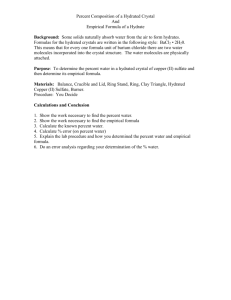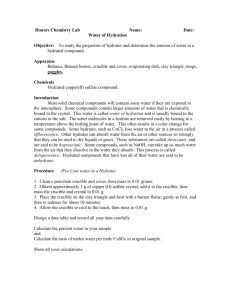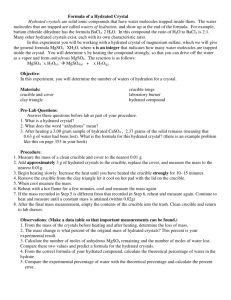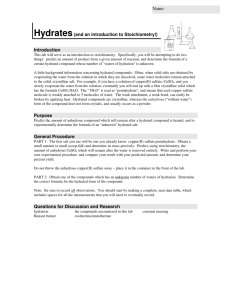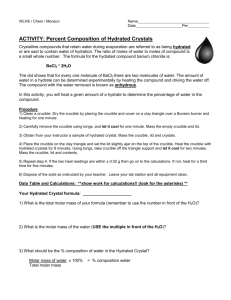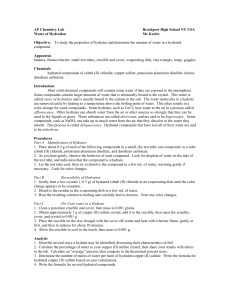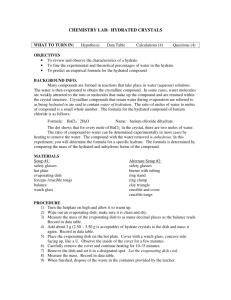File
advertisement
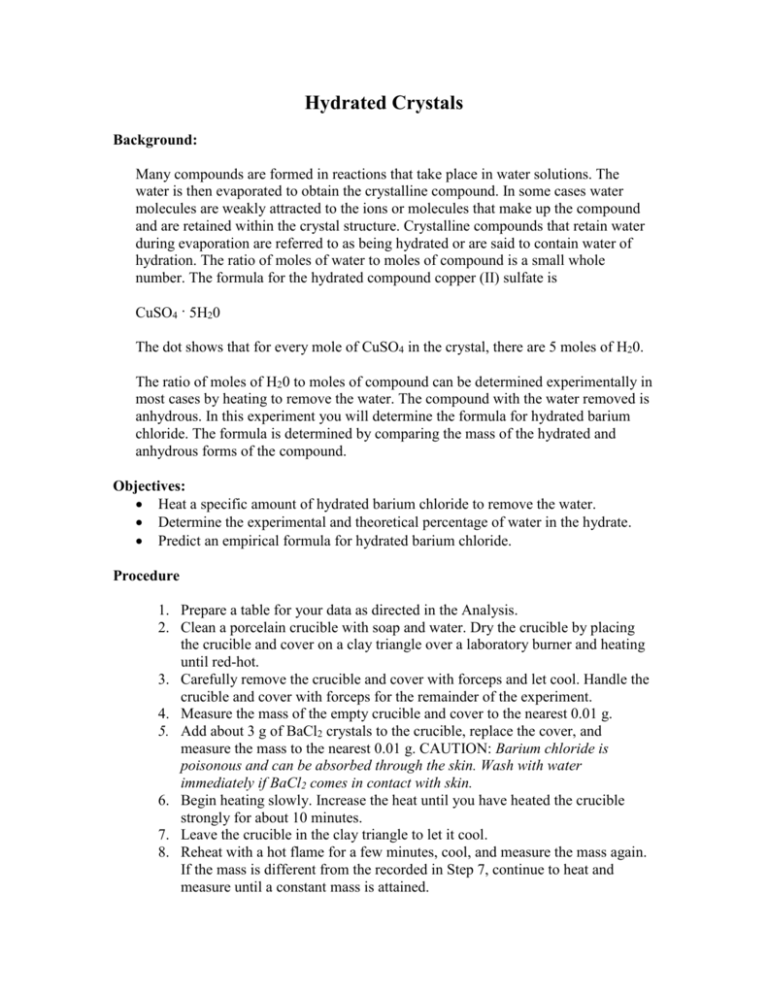
Hydrated Crystals Background: Many compounds are formed in reactions that take place in water solutions. The water is then evaporated to obtain the crystalline compound. In some cases water molecules are weakly attracted to the ions or molecules that make up the compound and are retained within the crystal structure. Crystalline compounds that retain water during evaporation are referred to as being hydrated or are said to contain water of hydration. The ratio of moles of water to moles of compound is a small whole number. The formula for the hydrated compound copper (II) sulfate is CuSO4 · 5H20 The dot shows that for every mole of CuSO4 in the crystal, there are 5 moles of H20. The ratio of moles of H20 to moles of compound can be determined experimentally in most cases by heating to remove the water. The compound with the water removed is anhydrous. In this experiment you will determine the formula for hydrated barium chloride. The formula is determined by comparing the mass of the hydrated and anhydrous forms of the compound. Objectives: Heat a specific amount of hydrated barium chloride to remove the water. Determine the experimental and theoretical percentage of water in the hydrate. Predict an empirical formula for hydrated barium chloride. Procedure 1. Prepare a table for your data as directed in the Analysis. 2. Clean a porcelain crucible with soap and water. Dry the crucible by placing the crucible and cover on a clay triangle over a laboratory burner and heating until red-hot. 3. Carefully remove the crucible and cover with forceps and let cool. Handle the crucible and cover with forceps for the remainder of the experiment. 4. Measure the mass of the empty crucible and cover to the nearest 0.01 g. 5. Add about 3 g of BaCl2 crystals to the crucible, replace the cover, and measure the mass to the nearest 0.01 g. CAUTION: Barium chloride is poisonous and can be absorbed through the skin. Wash with water immediately if BaCl2 comes in contact with skin. 6. Begin heating slowly. Increase the heat until you have heated the crucible strongly for about 10 minutes. 7. Leave the crucible in the clay triangle to let it cool. 8. Reheat with a hot flame for a few minutes, cool, and measure the mass again. If the mass is different from the recorded in Step 7, continue to heat and measure until a constant mass is attained. Analysis: 1. Complete the following table: Mass of crucible + cover Mass of crucible + cover + hydrated BaCl2 Mass of hydrated BaCl2 Mass of crucible + cover + anhydrous BaCl2 Mass of anhydrous BaCL2 Mass of H20 in the hydrate Moles of anhydrous BaCl2 Moles of H20 in the hydrate 2. (a) Determine the percentage of water in the hydrated crystals of BaCl2 using your data. (b) Assume that the correct formula is BaCl2 · 2H20. Using this formula, calculate the theoretical percentage of water in the hydrated crystals. (c) Compare the experimental percentage of water in the hydrate with the theoretical percentage and calculate your percentage of error. Conclusions: 1. Compare the number of moles of anhydrous BaCl2 to the number of moles of water in the hydrate. Use the ratio of these two values to predict a formula for hydrated BaCl2. 2. The method used in this experiment to find the percentage of water in the hydrated crystals is not suitable for all hydrates. Give at least two reasons why this may be so.

